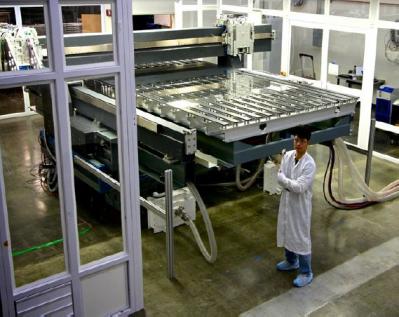Samsung launches the GS5 with a 5.1" FHD Super AMOLED
Yesterday Samsung unveiled their latest Galaxy S series smartphone, the Galaxy S5. Samsung says that the new phone was designed to "focus on what matters most to consumers". The display is a 5.1" FHD (432 PPI) Super AMOLED display (seems to be the same display as on the GS4, only a bit larger).

Other features of the GS5 include a 2.5 Ghz quad-core CPU, 2GB of RAM, 16MP camera (4K video support). The GS5 is dust and water resistant, and it packs a finger scanner and a heart rate sensor. The new flagship device will launch on April 11 in 150 countries worldwide.








